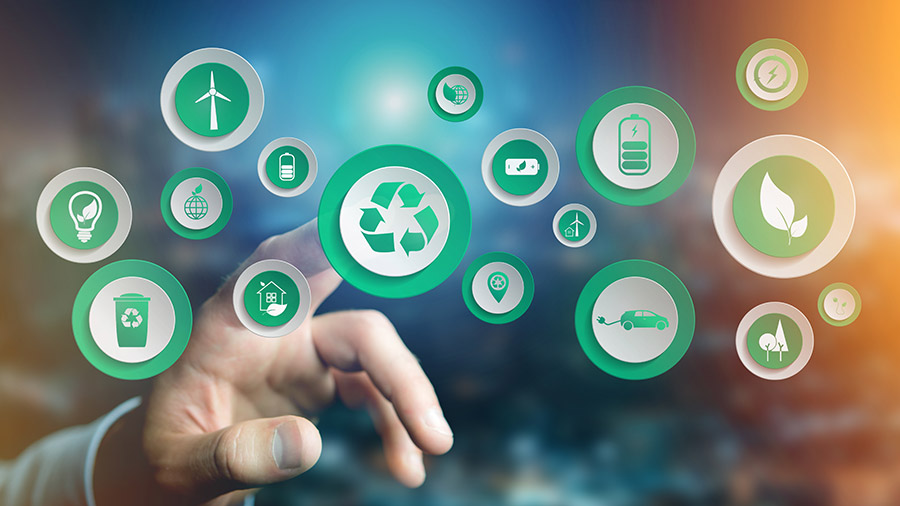Aligning China’s Belt And Road Initiative International Green Development Coalition With The 2030 UNSDG Goals
A China-led effort, the greening of the Belt and Road Initiative involves development projects aligned with the 2030 UNSDG goals that also present climate action-positive investment opportunities.
Since it was first proposed in 2013, China’s Belt and Road Initiative (BRI) has taken on many forms. A clear-eyed strategy to connect Asia with Africa and Europe via land and maritime networks, the BRI’s primary goals are regional integration and stimulating trade and economic growth.
Yet, these goals have not been limited to any singular aspect of trade, logistics, and infrastructure but encompass digital connectivity, healthcare systems, and green goals through technology, capacity building investments, and sharing information.
These facilitate both Chinese companies and BRI participants to innovate, sell, install, and operate telecom infrastructure; invest in healthcare programs, medical assistance, and medical supply chains; as well as promote and develop resource efficiency and renewable technologies within logistics infrastructure.
The last aspect refers to ‘greening of the BRI’, where projects contribute to the UN Environment Program’s (UNEP) Medium-Term Strategy that looks at resource efficiency, climate change, healthy and productive ecosystems, environmental governance, etc. These ultimately tie into several of the 2030 UN Sustainable Development Goals, which acts as a “blueprint to achieve a better and more sustainable future for all”.
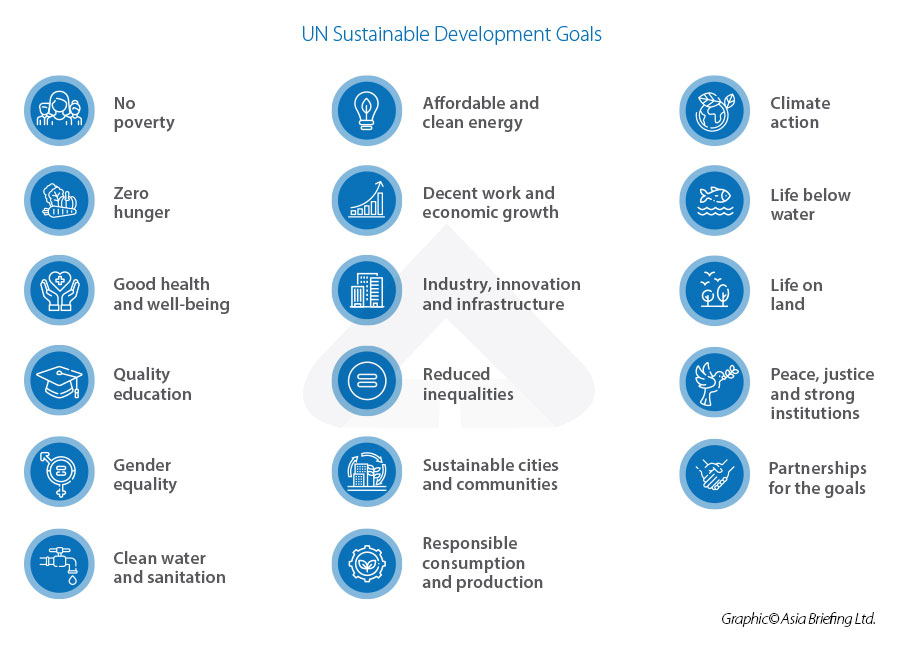
As several countries from around the world debate an actionable timeline to curb the worsening climate change at the COP26 summit in Glasgow, the US and China announced a surprise plan on November 10 to work together on cutting greenhouse gas emissions in the next decade. It bears mentioning that recent moves by China have already pivoted to securing climate action goals. Previously, at the COP15 summit in October (Kunming Declaration), President Xi Jinping touted the concept of ‘ecological civilization’, which envisions the mainstreaming of biodiversity across all decision-making and increasing financial, technological, and capacity-building support to developing countries, among others. And, in the lead-up to the COP26 summit, China released a comprehensive Action Plan for reaching peak carbon emissions by 2030 and the country’s plans to control carbon growth in vast areas of its economy.
Belt and Road Initiative International Green Development Coalition
Also known as The Coalition or BRIGC, this a new avenue for increasing the environmental sustainability of the BRI. It was launched at the Second Belt and Road Forum for International Cooperation that took place in April 2019 in Beijing. According to the UNEP, The Coalition is an open, inclusive, and voluntary international network that brings together the environmental expertise of all partners to ensure that the Belt and Road brings long-term green and sustainable development to all concerned countries in support of the 2030 Agenda for Sustainable Development.
The Coalition currently has 134 partners, including 26 Environmental Ministries of UN Member States. Its mission is to integrate sustainable development (particularly, environmental sustainability), international standards, and best practices across the five priorities of the BRI – policy coordination, infrastructure, trade, financial integration, and cultural exchanges.
What The Coalition does
The Coalition, as per the UNEP, essentially offers a platform for the following objectives:
(1) Policy dialogue and communication
- Share green and sustainable development concepts and environmental policy options
- Provide communication opportunities among different BRI stakeholder groups, including business entities, research institutes, international, intergovernmental, non-governmental organizations, and governments
- Forge a joint research network that can provide support and policy recommendations for green development in the BRI regions
(2) Share knowledge, data, and analyses
- Environmental protection, pollution prevention and control
- Green development of the Belt and Road
- Capacity building on environmental management and sustainable infrastructure development
- Raising environmental awareness
A biennial High-Level Roundtable for Green Development on the Belt and Road and various Thematic Partnerships made up of coalition partners will seek to deliver The Coalition’s objectives. The areas of Thematic Partnerships may cover the following:
- Biodiversity and ecosystem management
- Green energy and energy efficiency
- Green finance and investment
- Improvement of environmental quality and green cities
- South-South environmental cooperation and capacity building towards realizing the 2030 agenda on sustainable development
- Green technology innovation and corporate social responsibility
- Environmental information sharing and big data
- Sustainable transportation
- Global climate change governance and green transformation
- Environmental laws, regulations, and standards
Webinar hosted by the Belt & Road Institute in Sweden (BRIX)
“The Green Belt and Road Initiative: Development is an Essential Human Right”
The Belt & Road Institute in Sweden (BRIX), a non-profit association, organized a webinar on November 10 about the green pivot of Belt and Road projects and the objective investment opportunities associated with them spanning shipping, healthcare, clean energy, water and waste management, sustainable city infrastructure, as well electrified railway connectivity, to mention a few sectors.
Speakers at the webinar included Erik Solheim Former Norwegian Member of Parliament, Former UN Under Secretary General and former Executive Director of the UN Environmental Program; Professor Michele Geraci Former Undersecretary of State at the Italian Ministry of Economic Development; Henry Tillman, Founder and Chairman of the China Investment Research; Georg Finsrud, CTO, Scanwater Technology, System Integrator at SIEU Green; Hussein Askary Member of the Board for the BRIX; and Stephen Brawer Vice Chairman of the BRIX. Diplomatic presence included Mr. Zhang Biao, Charge d’Affaires, Embassy of The People’s Republic of China; His Excellency Ambassador Bounliep Houngvongsone, Ambassador of Laos to Sweden; and Mr. Dmitry Matyulko, Charge d’Affaires, Embassy of Belarus to Sweden.
During two elaborate sessions, respective speakers highlighted how technology like molten salt reactors could be a game changer to curb emissions by the shipping industry, LNG (transported along the Polar Silk Road) as an alternative fuel resource to coal and oil, development of wastewater management solutions to optimize resource utilization and address clean water and food security, and the importance of promoting connectivity and energy infrastructure building across Africa.
By highlighting these new avenues for investment, the speakers expressed the need to depoliticize their financial evaluation and instead focus on the improvements to the living environment of the affected Belt and Road regions and well as the impetus to reduce carbon emissions through spreading frontier tech.
These present real opportunities for technology sharing and business ventures by the advanced European and Nordic countries if they moved past the current anti-China sentiment that has led to deep suspicion of BRI projects. That attitude has impacted both potential target beneficiaries, polarized regions, and dried up financing avenues for capital-heavy infrastructure undertakings. Speakers felt it was necessary to communicate to European nations that BRI projects would involve China dealing with sovereign countries and that these projects were aligned with development goals of self-sufficiency, greater connectivity, and resource optimization.
Some highlights from the presentations:
Henry Tillman: Developments involving Arctic LNG, electric high-speed rail (HSR) across Eurasia and Southeast Asia
- China is building four ships for Qatar to increase production of LNG in conjunction with Russia. Russia produces LNG cheaper and can transport via the Northern Sea Passage, a new shipping lane (Russia and Japan in talks about carbon capture in this area). Asia and Europe will account for 88 percent of incremental LNG demand. Russia has five nuclear submarines that has 2.3-meter ice breaking capability and five more being built that will have 4-meter ice breaking capability. Project financing for LNG in the Arctic region is opposed by the EU. India is in talks with Russian energy producer Novatek to buy a 9.9 percent stake in the Novatek-led Arctic LNG-2 project.
- In terms of rail service, progress has been made in terms of Eurasian rail volume from 17 rails from China into Europe in 2011 to 20,000 in 2021 (23 countries, 169 European cities, 29 Chinese provinces). Eurasian rail routes are Northern Corridor (10,000 km and takes 15 to 20 days) and Trans-Caspian route (7000 km and 10 to 15 days) while the Ocean route is 20,000 km and takes 45 to 60 days. High-speed rail projects active in Laos [to become functional in December] and Indonesia [planning stage, 2022 timeline]; links to Vietnam and China and Myanmar and China are in place. Chinese involvement in the Indonesian HSR project (Jakarta to Bandung) will involve technology transfer.
- China-Europe rail freight routes include the East Route, Middle Route, West Route, and Intermodal connectivity, and bring Turkey into the BRI foray. These rail routes are electric and so clean energy.
- Another interesting BRI project is the revival of a transnational rail service between Istanbul, Tehran, and Islamabad. Called the ITI transnational railroad, it will provide connectivity with the BRI region by linking China and Turkey. [According to Nikkei Asia, “1,950 km of track is in Turkey, 2,600 km in Iran, and another 1,990 km in Pakistan. The journey from Istanbul to Islamabad will take ten days, much faster than the 21 days by sea between Turkey and Pakistan.”] Pakistan’s ML-1 railway line, worth US$6.8 billion is the largest component of the China-Pakistan Economic Corridor (CPEC); it is due to be completed by 2026.
- If the shipping industry were a country, it would be sixth largest polluter and there is a goal to cut emissions by 2050, which is moving very slowly. Here, MSR (interest from Russia, China, Japan, South Korea, etc. and shipping companies) led by nuclear thorium would be a clean fuel alternative. The technology was abandoned by the US previously as it could not be weaponized.
Georg Finsrud: Turnkey water solution projects and municipal preparedness; opportunities for European investors
- ScanWater, a Norweigian company, is a socially responsible company engaged in development, human aid, entrepreneurship, readiness, academia, and sustainability. For example, mobile water purification, storage, and distribution facilities (separate drinking/toilet/shower systems) in field hospitals. Safe water and sanitation systems are a focus. OXFAM, ICRC, IFRC, WVI, NCR, IOM, UNDP, UNHCR, WFP, UNOPS etc. and many European city municipalities are some of the customers.
- SIEU Green, an EU-China cooperation project: Participants from Sweden, Denmark, Italy, Turkey, China. The Consortium of the SIEU Green project is multi-disciplinary consisting of European and Chinese researchers, technology providers, SMEs, financiers, local and regional authorities, and resident communities. It addresses renewable energy (yellow tech), waste and water management (blue tech), planting techniques (green tech), and social innovation (social engagement and co-creation). ScanWater is involved in the blue tech component – exported Norwegian water management technology to China 20 years ago, use of Norwegian tools to bridge engineering capacity (NOREC, NORAD) and now importing a lot of technology from China. [SIEU Green project showcases include the Arhus (Denmark) and Hatay (Turkey) municipalities, Fredrikstad (Norway), Changsha (Hunan, China).]
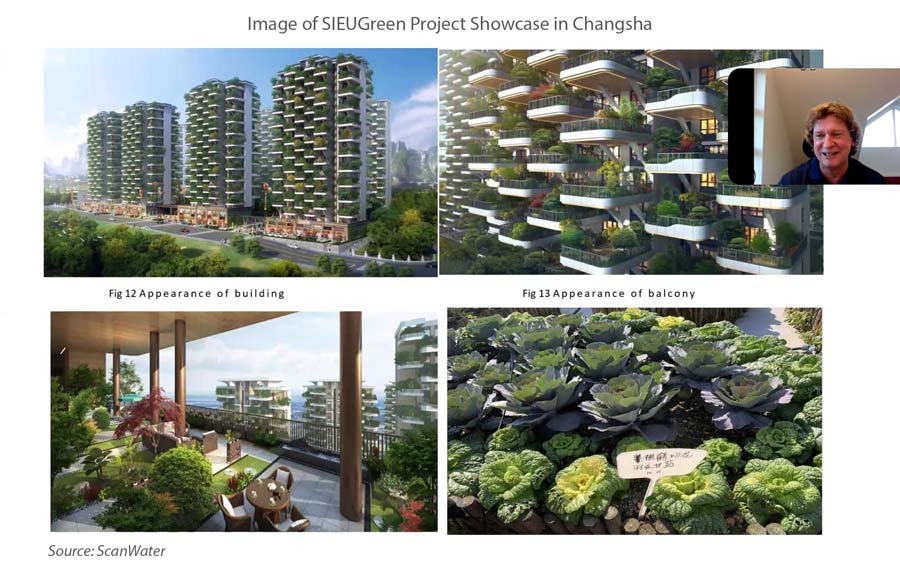
- Water sectors are huge carbon emitters. Source separating technology (green energy and zero waste concept) – innovations by ScanWater. (33 billion euro technology development cost in Norway.) Separate water in buildings, urban areas – from black water and organic waste from households – for various types of use, such as for agriculture. Greywater treatment in building basements – water recycled for toilet flushing use. These are all investment opportunities and scalable. The Greenergy brand has been trademarked and target groups are engineering, sustainable initiatives, city planning and research – the brand has scored high on EU innovation radar.
Erik Solheim:
- On Scandinavian reticence in BRI – focus is on bilateral investments with China, perception challenges about goals of the BRI and doing business with China.
Hussein Askary: BRI projects in Africa focus on development and empowerment but suffer obstruction from West
- Chinese investments are attractive to Africa given its own poverty alleviation, industrial development, and sustainable growth and its development loans and aid do not come with political strings attached.
- China’s engagement with Africa hinges on industrialization according to President Xi Jinping; need to address three bottlenecks of development – shortage of capital, skilled labor, and infrastructure. To invest over US$60 billion on infrastructure.
- China is second most popular education destination after France since 2013, surpassing UK and US.
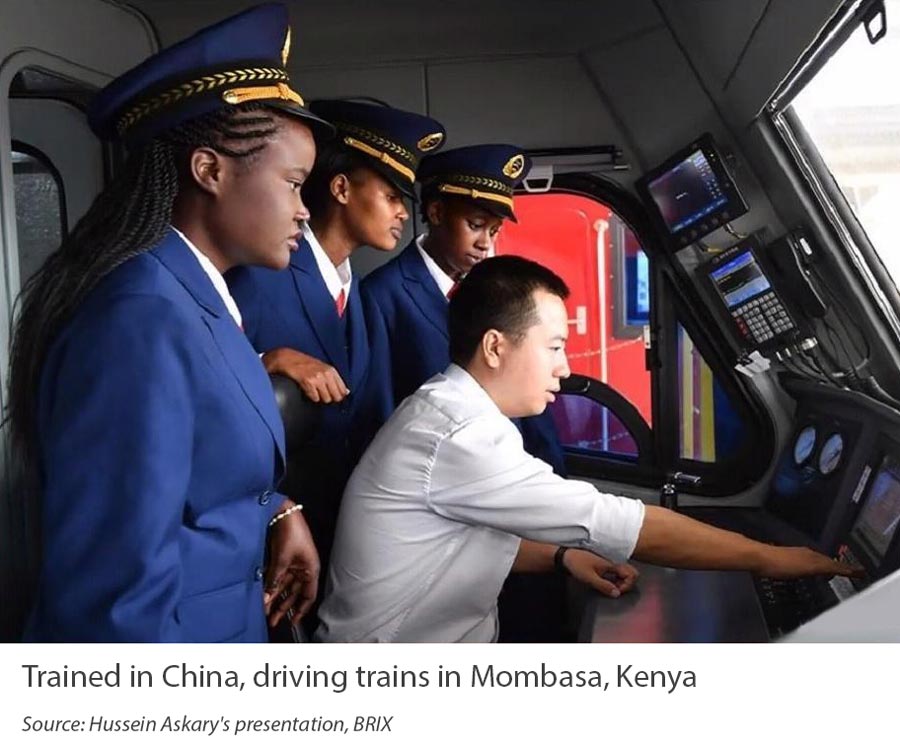
- Need to develop river and lake transport linkage systems like Black Sea, Danube, Rhine in Europe (from South Africa to Egypt to West Africa) – scope for projects but funding and stakeholder support are challenges.
- Since 2014, China has built electrified railways – Djibouti-Addis Ababa Railway, Mombasa-Nairobi; plan to connect landlocked countries Uganda, Rwanda, Burundi and East Congo, Zambia and East Africa network.
- Congo river hydropower capacity projected at 40,000 MW under Grand Inga Dam (double size of Three Gorges Dam). Chinese hydro and Spanish company bid for feasibility study and engineering scope rejected by World Bank, EU, environment groups.
- World’s first high school for education and training as technicians for nuclear power plant in Egypt; senior engineers are being educated in Russia.
- Russia and China have nuclear cooperation agreements with African countries.
- Africa needs power and energy infrastructure to sustain development of what China calls ‘moderately prosperous society’. Cannot be held responsible for stringent climate action goals as they are responsible for least emissions in the world.
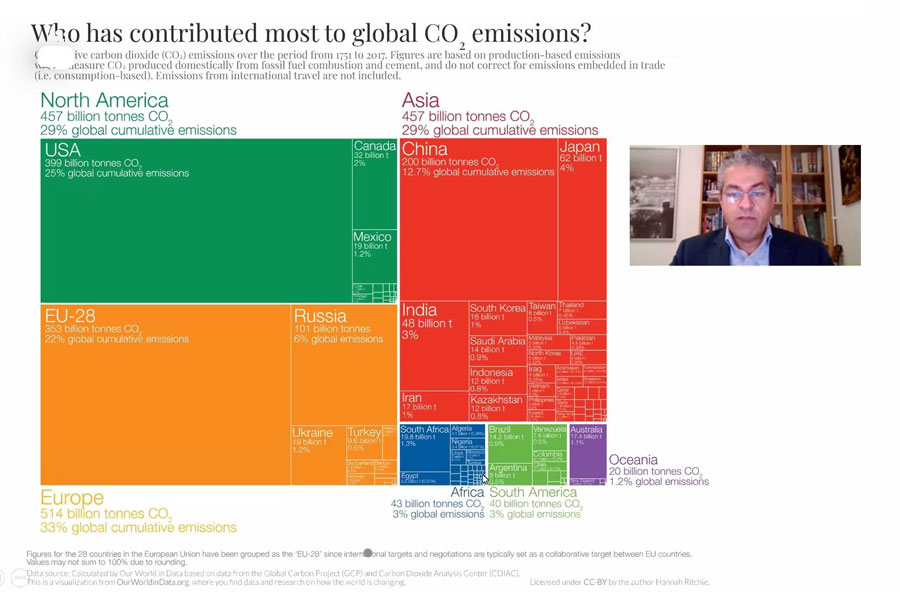
Related Reading
About Us
Silk Road Briefing is written by Dezan Shira & Associates. The firm has 28 offices throughout Asia, and assists foreign investors into the region. For strategic advisory and business intelligence issues please contact the firm at silkroad@dezshira.com or visit www.dezshira.com
